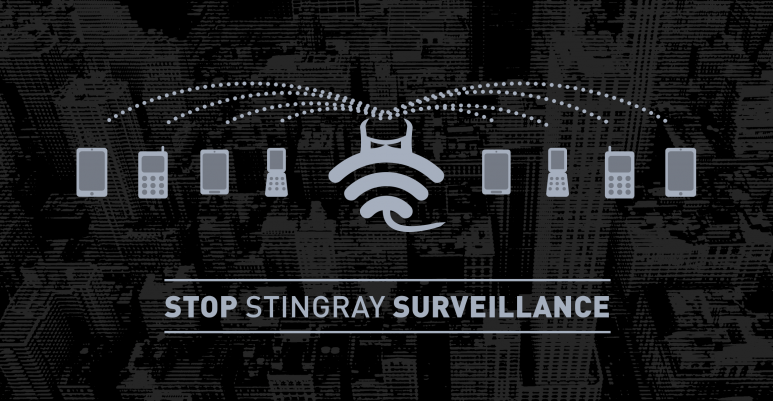Big news this week: a comprehensive new report has just revealed the potential extent to which Stingray phone surveillance tools, technically known as IMSI-catchers, are being used in Canada. Stingrays mimic cellphone towers and are designed to collect information from every cellphone in a given area, including geo-location and content data.
The Gone Opaque? report, covered in Tuesday’s Globe and Mail, details the great lengths security agencies have gone to in order to keep their use of Stingrays secret. It also makes a number of recommendations to ensure greater transparency and proportionality around Stingray use.
The 128-page report is the joint work of the Telecom Transparency Project at the University of Toronto’s Munk School, and the Canadian Internet Policy and Public Interest Clinic (CIPPIC). (The authors — Tamir Israel of CIPPIC and Chris Parsons of Citizen Lab — are well known to anyone who’s followed the work of the Protect our Privacy coalition over recent years.)
Given the information outlined in the report, your OpenMedia team is now calling on Minister Goodale to address Stingray use in the government’s recently announced consultation on privacy and security matters.
It’s clear from this report that any Canadian, anywhere, at any time could potentially be — or may already have been — a victim of these indiscriminate mass surveillance tools. The problem with allowing these devices to be used in secrecy is that it doesn’t provide or require any oversight or accountability. That’s why, back in April, I complained to the federal Privacy Commissioner about the use of Stingray devices –a complaint which triggered an ongoing official investigation.
Public Safety Minister Goodale has promised Canadians an open debate to ensure our Charter rights are protected — but that can only happen when we have answers about when, where, and how these devices are being used. Hopefully, Canadians will use the government’s security consultation to kickstart informed, democratic discussion about the implications of Stingray use for our privacy and personal security. This blatant violation of our Charter rights can’t afford to go uncorrected.
The report’s publication comes following revelations in June that the RCMP has been indefinitely retaining the private data of innocent Canadians swept up through its use of Stingray cell phone surveillance devices over the past 10 years.
Key issues raised by Tuesday’s report include:
-
Police forces and security agencies have gone to enormous lengths to conceal their use of Stingrays from the Canadian public. The report concludes that “ongoing secrecy has the effect of delaying important debates.” (p. 25-31)
-
Given the lack of publicly-available information, it’s very difficult to analyze whether police use of Stingrays in Canada is legal and constitutional. The report concludes that prior judicial authorization, along with additional safeguards, would be required for the devices to be used lawfully. (p. 87-105)
-
Security agencies can use Stingrays to ascertain the identity of individuals engaged in anonymous activities: such as who is visiting a certain location, or who is using their mobile device to communicate via the Internet. (p. 126)
The report makes a number of key recommendations regarding Stingray use in Canada, including:
-
transparency measures designed to ensure the Canadian public is aware of and can track the use of Stingray devices;
-
conditions intended to help ensure these devices are only deployed in proportionate circumstances; and
-
minimization and targeting mechanisms designed to help limit the impact of these devices on non-targeted individuals.
Join over 40,000 people calling on decision-makers to implement safeguards to protect innocent individuals from Stingray phone surveillance at StopStingrays.org!
Like this article? rabble is reader-supported journalism. Chip in to keep stories like these coming.



